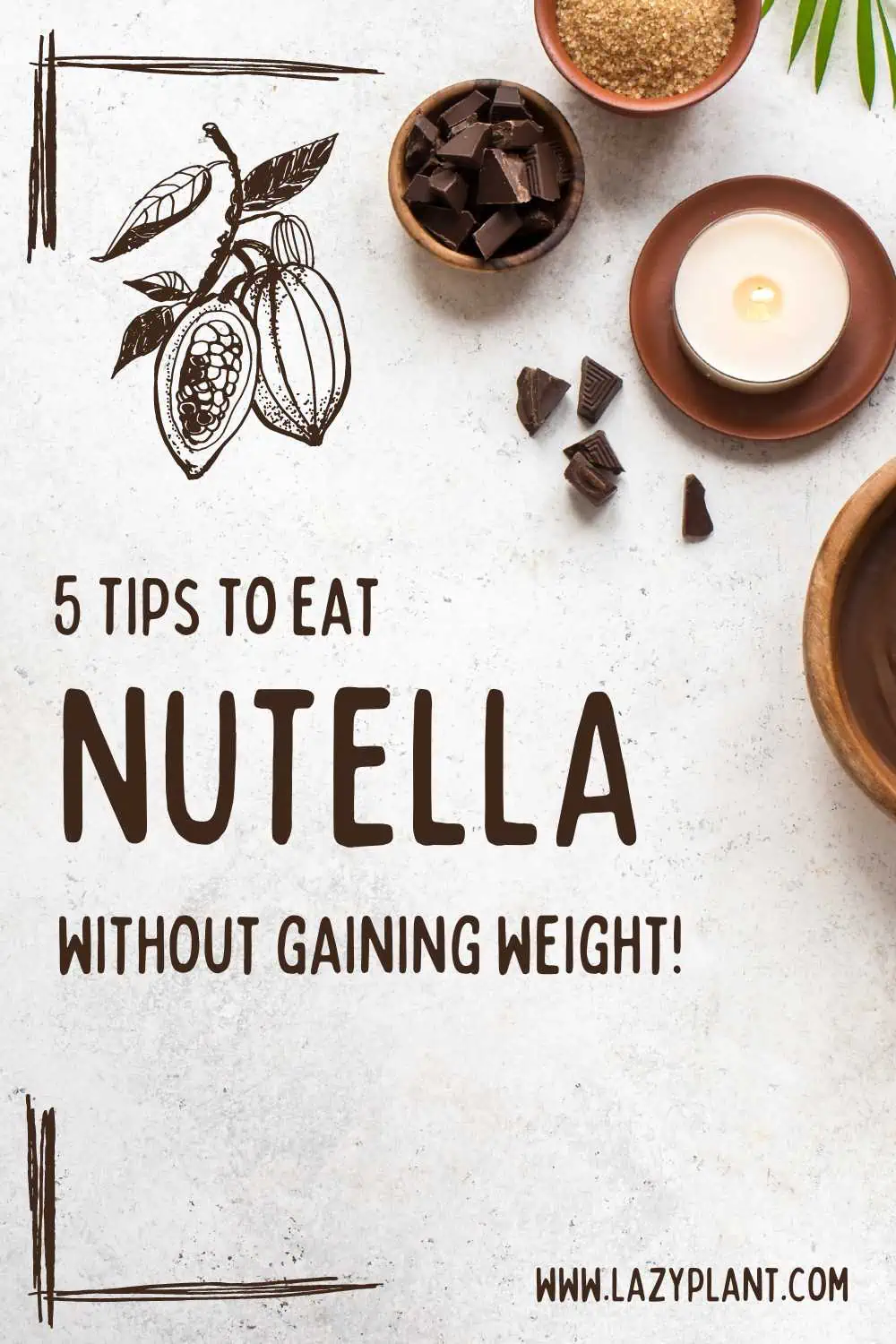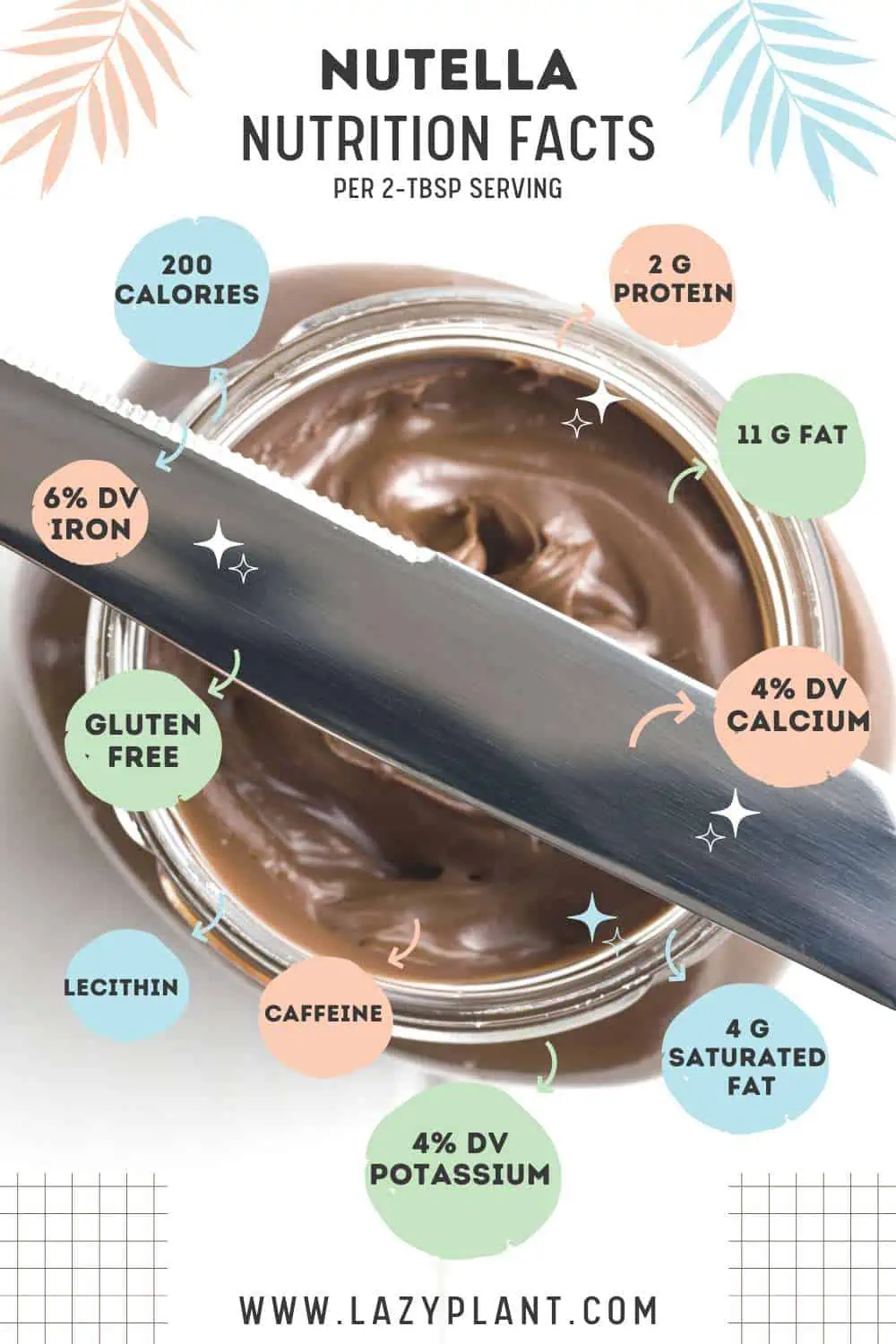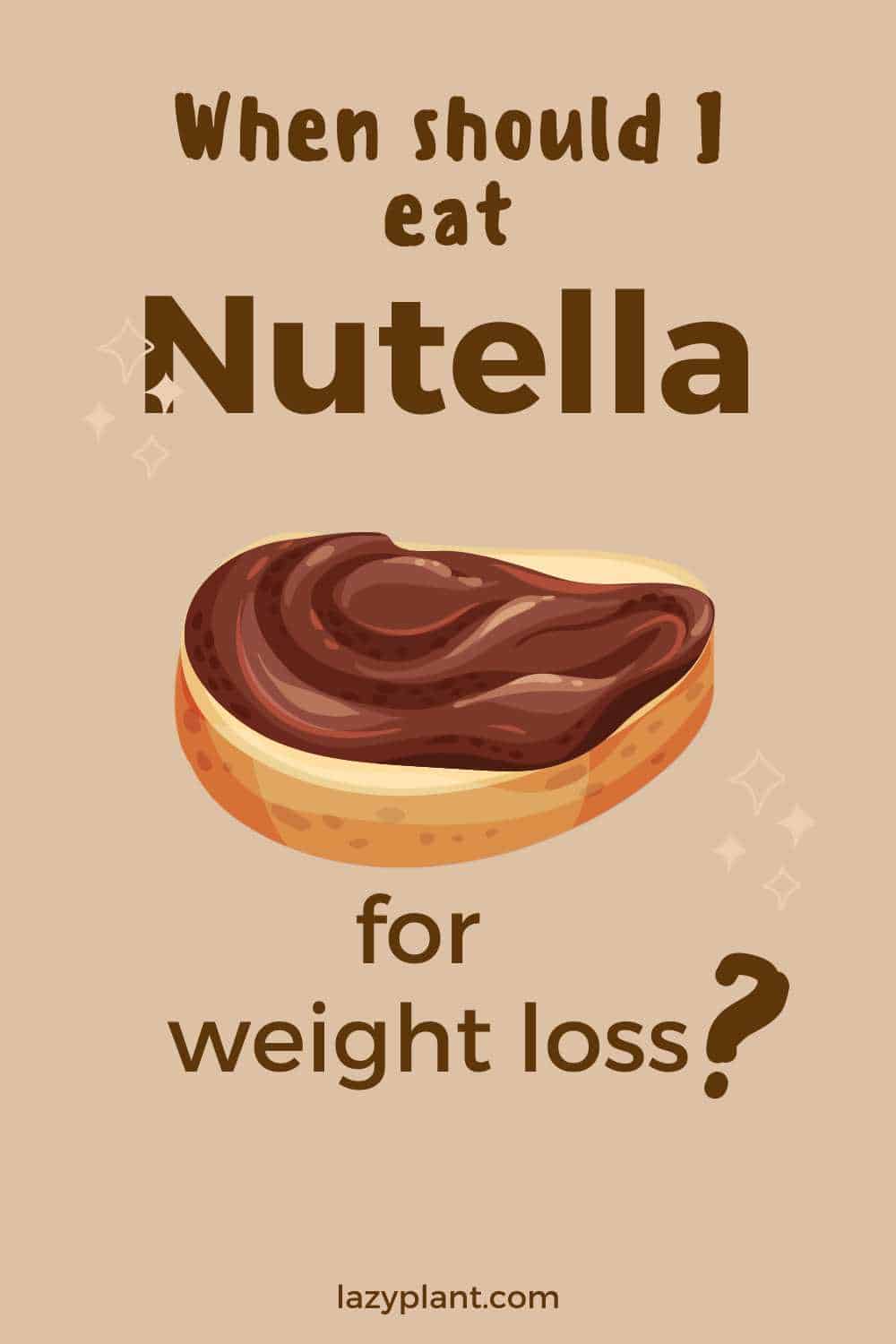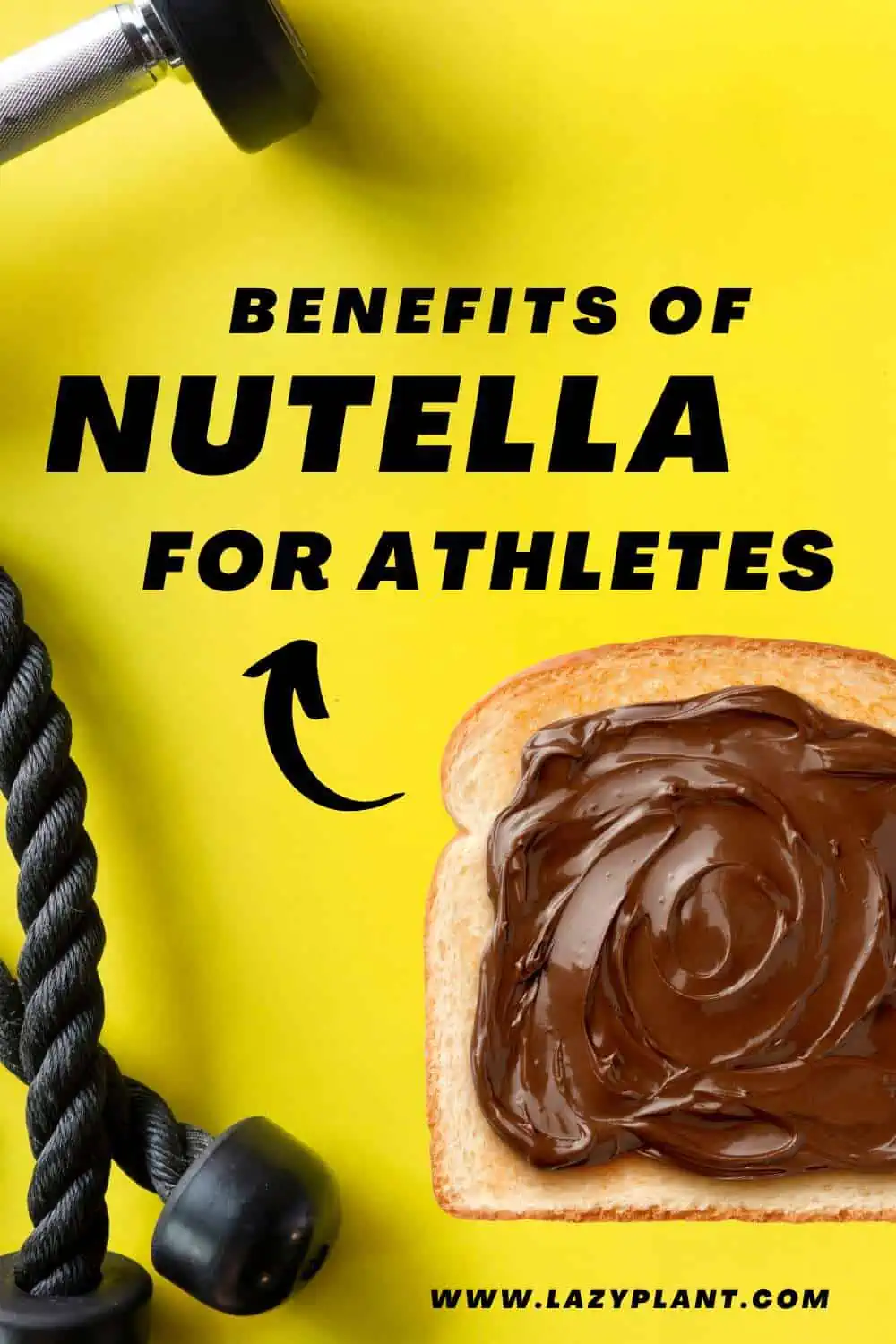While chocolate hazelnut spreads like Nutella don’t fit into the historical tradition of Mediterranean sweets, they can be incorporated in small, controlled amounts in a modern Mediterranean Diet. To stay aligned with weight loss goals, it’s essential to limit portion sizes and pair them with whole, fiber-rich foods.
Can Nutella be part of the Mediterranean Diet?
Nutella and other chocolate hazelnut spreads are not traditionally part of the Mediterranean Diet, which emphasizes whole, unprocessed foods like fruits, vegetables, legumes, whole grains, nuts, and olive oil. These spreads are often high in added sugars and fats, which can be counterproductive to weight loss and overall health goals if consumed in large amounts.
However, they can be enjoyed in moderation, even in the context of the Mediterranean Diet, if balanced with nutrient-dense, lower-calorie foods.
Did Ancient Greeks, Romans, and Egyptians Eat Hazelnut Spreads or Chocolate?
The consumption of Nutella-like chocolate hazelnut spreads was unknown in ancient civilizations such as those of the Greeks, Romans, and Egyptians.
Chocolate, in particular, was not introduced to Europe until after the Spanish conquest of the Americas in the 16th century.
Hazelnuts were consumed in these ancient regions, but they were eaten in their natural form or ground into pastes, mixed with honey or other ingredients, rather than being made into a sweet spread with chocolate.

Traditional Mediterranean Desserts
Traditional Mediterranean sweets from ancient times tended to focus on natural ingredients like honey, nuts, and fruits, offering indulgence with more nutrient density than modern processed spreads. Honey was the main sweetener in Mediterranean cuisine for centuries.
Ancient Greeks
Pasteli: A traditional Greek sweet made from sesame seeds and honey, often compared to modern energy bars. It’s rich in nutrients and similar to today’s sesame-based desserts.
Honey and Nuts: Greeks often combined nuts like almonds and walnuts with honey, a natural sweetener, as a simple dessert.
Loukoumades: Small, deep-fried dough balls drizzled with honey and sprinkled with cinnamon.
Ancient Romans
Libum: A type of cheese-based cake sweetened with honey, often offered to the gods or served during special occasions.
Dulcia Domestica: Dates stuffed with nuts like almonds or walnuts, served with honey, were a common Roman dessert.
Ancient Egyptians
Date Sweets: Dates mixed with nuts or seeds and honey were common sweet treats. Egypt was rich in dates, and they were often combined with various grains to make nourishing cakes or energy-dense snacks.
Nutritional Value
Nutella can be part of a healthy diet. Although Nutella has too many calories, we still can eat it while following a hypocaloric diet for weight loss.
Calories
Nutella is bad for weight loss because it has too many calories. Just a tablespoon of Nutella has 100 calories, while a typical 2-tablespoon serving has 200 calories.[1]
Moreover, a slice of bread has about 75 calories. Hence, a typical Nutella toast has almost 300 calories!
Sugar
Nutella is high in sugar, which is an important consideration when incorporating it into your diet.
A single serving of Nutella contains 21 grams of sugar, with a staggering 19 grams coming from added sugars. This translates to about 5 teaspoons of sugar, making it a significant source of sweetness. Notably, this amount constitutes 84% of the maximum recommended daily intake for added sugars.[2]
While Nutella can be enjoyed as an occasional dessert to satisfy cravings, it’s not advisable to consume it as a snack between meals. The high sugar content can lead to quick spikes in blood sugar levels, affecting hunger regulation and potentially promoting overeating.[3]
Furthermore, excessive sugar intake has been linked to obesity and other health issues. Only individuals with high energy demands, such as hard-training athletes, may find a place for Nutella in their post-exercise nutrition.

Saturated fat
Nutella contains a significant amount of saturated fat, with a serving size providing 11 grams of fat in total, of which 4 grams are saturated fat. This amount represents 30% of the maximum safe recommended intake for saturated fat.
According to the American Heart Association, excessive consumption of saturated fat can elevate LDL cholesterol levels in the blood, thereby increasing the risk of heart disease and stroke. Moreover, a high intake of saturated fat is associated with an increased likelihood of a higher Body Mass Index (BMI).[4]
To promote better health and support weight loss, it’s advisable to limit the consumption of Nutella and similar spreads, favoring instead foods rich in polyunsaturated or monounsaturated fatty acids, such as seeds, nuts, avocados, and olive oil.
Lecithin
Nutella uses lecithin as an emulsifier. It helps improve the texture and quality of the product. Lecithin may lower LDL cholesterol and help burn belly fat.[5,6]
But Nutella contains negligible amounts of lecithin. You won’t take advantage of its health benefits. There are much healthier food options to boost your lecithin intake.
Is Nutella more Fattening than Chocolate?
Yes, Nutella is generally more fattening than chocolate, primarily due to its higher content of sugar and added fats. While both Nutella and chocolate contain calories and fats, the composition of Nutella makes it more calorie-dense.
More Sugar, Less Fiber
Nutella contains around 56 grams of sugar per 100 grams, which is higher than both milk and dark chocolate. This makes Nutella a highly refined, fast-digesting source of calories, which can contribute to weight gain if consumed in excess.
After all, Nutella is often eaten in larger portions, as it’s used as a spread, which can easily add up in calories compared to chocolate, which people might consume in smaller amounts, especially dark chocolate.
Unlike dark chocolate, which is high in fiber, Nutella has almost no fiber. Fiber helps slow down digestion and promotes satiety, which can aid in weight management. Nutella’s low fiber content means that its sugars are absorbed quickly, leading to potential spikes in blood sugar and contributing to fat storage.
The Role of Palm Oil
Nutella includes palm oil, which increases the overall fat content. Although chocolate also contains fat (from cocoa butter), Nutella’s combination of sugar and added fats makes it particularly calorie-dense.
Palm oil has been widely linked to issues of obesity and inflammation due to its high content of saturated fat and its effects on metabolic health. While palm oil is commonly used in processed foods, the health impacts largely depend on how it’s processed and consumed.
Palm Oil and Obesity
Palm oil is composed of about 50% saturated fat, particularly palmitic acid. Saturated fats like palmitic acid may enhance lipogenesis, which is the process of converting carbohydrates into stored fat. Consuming large amounts of palm oil could, therefore, promote weight gain and increase visceral fat, a type of fat linked to obesity-related diseases such as diabetes and heart disease.
Some studies suggest that high saturated fat intake can interfere with hormones that regulate appetite, like leptin (signals fullness) and ghrelin (stimulates hunger). This disruption can make it harder to maintain a healthy weight, as it could lead to overeating.
Palm Oil and Inflammation
Excessive consumption of saturated fats, including palm oil, has been associated with chronic inflammation. Saturated fats can activate the body’s immune response, leading to the release of pro-inflammatory cytokines. Chronic inflammation is a precursor to many health conditions, such as heart disease, type 2 diabetes, and metabolic syndrome.
Palm oil, particularly when used in processed foods or deep frying, can become oxidized, which creates oxidative stress in the body. Oxidized palm oil increases free radical production, further contributing to inflammation. This is more prevalent in refined palm oil, which undergoes high-temperature processing.[7,8]
Moreover, chronic consumption of saturated fats, including palm oil, has been shown to alter the composition of the gut microbiota, which can promote systemic inflammation. An unhealthy gut microbiome is linked to increased permeability in the gut lining, allowing inflammatory substances to enter the bloodstream (a phenomenon known as leaky gut).
Can Palm Oil be part of the Mediterranean Diet?
Palm oil is not a traditional component of the Mediterranean diet, which emphasizes healthy fats from sources like olive oil, nuts, seeds, and fish. The Mediterranean diet is rich in monounsaturated and polyunsaturated fats, particularly from extra virgin olive oil, which has anti-inflammatory and heart-protective properties.
In contrast, palm oil is high in saturated fats, which are linked to inflammation and obesity when consumed in excess.
While small amounts of palm oil may be included occasionally, it does not align with the core health principles of the Mediterranean diet. For optimal health, it’s better to prioritize traditional Mediterranean fat sources like olive oil.
How to eat Nutella for Weight Loss?
Portion control: Stick to small servings. Limiting to 1-2 teaspoons per serving is key. Use a teaspoon or a knife to take a modest portion. Most people who use a tablespoon consume far more calories than they think.
Pair with healthier foods: Spread a small amount on whole grain bread, whole-grain breadsticks, rice cakes, or fruit like apples or bananas. This combines the indulgence with fiber and nutrients that promote satiety and slow down sugar absorption.
Limit frequency: Treat Nutella as an occasional indulgence rather than a daily staple.
Avoid pairing with other high-calorie foods: Use Nutella in place of other calorie-dense spreads or toppings, rather than adding it to already rich foods.

When can I Eat Nutella for Weight Loss?
Best Time: Breakfast
Nutella on whole-grain bread or toast can provide a quick source of energy in the morning, especially when combined with protein (like Greek yogurt). Pairing Nutella with high-fiber foods can enhance satiety and help prevent overeating later in the day.
On the other hand, the high sugar content can lead to an initial energy spike followed by a crash, potentially affecting mood and focus throughout the morning.
Worst Time: Before Bedtime
Having a small amount of Nutella or any other chocolate spread can serve as a comforting treat to end the day, but consuming it before bed can lead to elevated blood sugar levels and increased energy, which may hinder sleep quality and delay onset latency.
Late-night snacking can contribute to weight gain if it leads to an excess calorie intake without subsequent activity to burn it off.
Snack Between Meals
Consuming Nutella as part of a balanced snack can help maintain energy levels and curb cravings for unhealthy foods. When enjoyed in moderation, it can satisfy sweet cravings without excessive calorie intake. However, remember that it’s easy to overindulge, as Nutella is calorie-dense, which could undermine weight loss efforts.
Around Exercise
After the Gym
It’s the only time of the day that I enjoy it as an occasional treat. Nutella can serve as a beneficial post-workout snack for hard-training athletes due to its high sugar content. This sugar helps replenish muscle glycogen stores, which is crucial after strenuous exercise.
The electrolytes, including potassium and calcium, found in Nutella aid in hydration and muscle function, which can further support recovery.
Additionally, the iron content (6% of the Daily Value per serving) is essential for oxygen transport and energy metabolism, making it especially beneficial for endurance athletes who may be at risk of iron deficiency.[9]
Before the Gym
While Nutella can be consumed before exercise, it is recommended to eat it at least two hours prior. This allows for proper digestion and prevents potential discomfort during physical activity. The presence of fat and fiber can lead to gastrointestinal issues if consumed too close to exercise time.
However, it does not provide a significant caffeine boost, which many athletes seek for improved performance, even if it’s about 7% cocoa. Dark chocolate with more than 70% cocoa solids has about 80 mg of caffeine per 100g!
Nutella can be a great energy booster for endurance athletes who follow a gluten-free diet. Nutella doesn’t contain any ingredients derived from gluten-containing cereals, like wheat, barley, or rye.[10]

Benefits for Athletes
Endurance Athletes: Nutella can be advantageous for long-distance runners, as it helps quickly replenish glycogen stores and electrolytes after a race. Eating it shortly after exercise can facilitate faster recovery.
Bodybuilders: Bodybuilders may find Nutella useful in the post-workout window, especially when paired with high-carb foods like white bread. The high sugar content can spike insulin levels, aiding in muscle recovery and growth during the heightened insulin sensitivity phase following intense training.
Take Away
Despite its benefits for recovery, Nutella is a calorie-dense food and may contribute to weight gain if consumed excessively, particularly for amateur athletes or those focusing on a lean physique. It’s important for these individuals to limit their intake to small amounts a few times a week, especially considering its high saturated fat content.
12 Healthy Nutella Recipes
You can use Nutella to prepare healthy snacks. You can use nutritious foods in your recipes, like fruits, chia seeds, flax seeds, walnuts, almonds, protein powder, quinoa, oats, and other whole grains.
Protein-Packed Nutella Smoothie Bowl: Blend together 1 frozen banana, 1 scoop of chocolate protein powder, 1 tablespoon of Nutella, 1 tablespoon of chia seeds, and 1 cup of almond milk. Top with sliced strawberries, crushed almonds, and granola.
Whole Grain Nutella Pancakes: Prepare a batch of whole grain pancake batter. Add 2 tablespoons of Nutella. Cook the pancakes as usual. Serve with sliced bananas and a drizzle of maple syrup.
Nutella Stuffed Whole Grain French Toast: Take two slices of whole grain bread and spread Nutella between them to make a sandwich. Dip the sandwich in a mixture of beaten eggs, almond milk, and cinnamon. Cook on a skillet until golden brown. Serve with fresh berries.
Protein Nutella Energy Balls: Combine 1 cup of rolled oats, 1/2 cup of Nutella, 1/4 cup of protein powder, 1/4 cup of crushed almonds, and 2 tablespoons of honey. Roll into bite-sized balls. Refrigerate for at least 30 minutes before consuming.
Nutella Banana Protein Muffins: In a bowl, mix 1 cup of whole wheat flour, 1/2 cup of protein powder, 1/4 cup of Nutella, 1 mashed banana, 1/4 cup of honey, and 1/2 cup of almond milk. Pour the batter into muffin tins and bake at 350 °F (175 °C) for 15–18 minutes.
Whole Grain Nutella Granola Bars: Mix together 2 cups of rolled oats, 1 cup of Nutella, 1/4 cup of honey, 1/4 cup of protein powder, 1/4 cup of chopped nuts, and 1/4 cup of dried fruit. Press the mixture into a baking dish and refrigerate until firm. Cut into bars and enjoy.
Nutella Chia Pudding: Combine 1/4 cup of chia seeds, 1 cup of almond milk, and 2 tablespoons of Nutella in a jar. Stir well and refrigerate overnight. Serve with sliced bananas and a sprinkle of crushed walnuts. Walnuts are among the richest foods in omega-3s, which are particularly beneficial for muscle growth.
Whole Grain Nutella Waffles: Prepare a batch of whole grain waffle batter and mix in 2 tablespoons of Nutella. Cook the waffles in a waffle iron and serve with a dollop of Greek yogurt and fresh berries.
Nutella Quinoa Breakfast Bowl: Cook 1/2 cup of quinoa according to package instructions. Once cooked, stir in 1 tablespoon of Nutella and top with sliced strawberries, blueberries, and a sprinkle of flax seeds. Flax seeds are among the richest foods in omega-3s as well.
Nutella Protein Overnight Oats: Combine 1/2 cup of rolled oats, 1 cup of almond milk, 1 tablespoon of Nutella, and 1 scoop of chocolate protein powder in a jar. Stir well, refrigerate overnight, and top with sliced bananas and a sprinkle of hemp seeds.
Whole Grain Nutella Banana Bread: Prepare a whole grain banana bread batter and swirl in 1/4 cup of Nutella. Bake according to the recipe instructions and enjoy a slice as a pre-workout snack.
Nutella Protein Crêpes: Make whole grain crêpes using a protein powder-infused batter. Spread Nutella on the crêpes and fold them into triangles. Top with a dollop of Greek yogurt and fresh raspberries.